Why Sunscreen Is Essential During Winter Sports
Many winter sports enthusiasts underestimate the importance of sunscreen — people often think: “It’s cold,” “There’s snow,” “I’m in the mountains, so there’s less sun.” But nothing could be further from the truth. Below, I’ll explain why the sun is actually stronger on the slopes, what the risks are, and how you can best protect yourself. I’ll also recommend a convenient sunscreen for your ski trip.
Why is winter sports exposure so risky for UV radiation?
Higher altitude = more UV
The higher you go, the thinner the layer of air that sunlight passes through — meaning less filtering. UV radiation increases with altitude; the air is cleaner and there’s less atmosphere to block UV rays.
As a rule of thumb: UV exposure increases by roughly 10% for every 1000 meters of elevation.
So, for example, when skiing at 2500 meters, you can experience about 25% or more UV exposure compared to sea level, depending on conditions.
Cleaner air and less pollution
Mountain air is often clearer, with less dust and pollution — substances that normally absorb or scatter some UV rays. This means more direct UV reaches your skin, amplifying the altitude effect.
Snow reflection
Snow is highly reflective to UV rays. According to the Better Health Channel, fresh snow can reflect up to 80% of UV radiation.
What does this mean in practice? You’re not only hit by sunlight “from above,” but also by reflected UV light “from below” — onto your face, goggles, neck, and other exposed areas.
Cold temperatures = less sensation of heat, more underestimation
Because it’s often cold, you may not feel the sun burning your skin. That makes you less alert to UV damage, leading people to underestimate the danger and skip sunscreen altogether.
Altogether, thinner air lets in more UV, less pollution means less filtering, and snow reflection amplifies it. The impact on your skin — and the potential for damage — is therefore significant. The message: apply sunscreen before you hit the slopes, and reapply regularly.
Which areas of the skin are most vulnerable?
Because UV radiation is amplified by snow reflection, pay special attention when applying sunscreen:
- Face (especially the nose bridge and cheekbones) — often fully exposed
- Ears, temples, and under the chin — commonly forgotten
- Neck and hands, especially during breaks or without gloves
- Eyes and surrounding skin — very sensitive to UV
Why is good protection important?
Proper sun protection is always important, but during winter sports it’s even more crucial due to altitude, cleaner air, and reflection.
Failing to use sunscreen in high UV conditions can lead not only to sunburn in the short term, but also long-term skin damage or even skin cancer.
- Short term: sunburn, redness, painful skin, and possible eye irritation or damage.
- Long term: cumulative UV damage can accelerate skin aging and increase the risk of skin cancer.
- Practical: sunburn on a ski trip causes discomfort, dehydration risk, and less fun overall.
How to protect yourself effectively
Enjoying your time on the slopes is great — but proper sun protection is essential. Here are a few practical tips:
- Apply sunscreen about 20 minutes before hitting the slopes. Use enough and spread it evenly. Choose SPF 30 or higher.
- Reapply every 2 hours, and always after sweating, breaks, or rubbing from helmets or scarves.
- Wear a helmet or hat that covers your ears and temples, and a neck warmer or buff to protect the back of your neck.
- Use ski goggles or sunglasses with UV filters and side protection.
- Choose clothing with good coverage — even if the sun doesn’t feel strong, reflection makes a big difference.
- Be mindful of peak UV hours: between roughly 10:00 and 16:00 UV is strongest, even in the mountains.
- Don’t forget your lips — use a lip balm with SPF.

Recommended sunscreen – Altruist Face Fluid SPF30 / SPF50
A very suitable and practical option for your ski trip is the Altruist Face Fluid SPF30 or the higher protection Altruist Face Fluid SPF50.
Why these are ideal:
- Specifically designed for the face, perfect for exposed areas like the forehead, nose, cheeks, and chin.
- Available in SPF 30 or 50 — SPF 50 is the smarter choice given the mountain conditions (altitude + reflection).
- Compact 50 ml tube — easy to carry in your ski jacket or backpack and reapply during the day.
- Every purchase supports children with albinism in Africa, through Altruist’s charitable mission.
Summary
Winter sports are not just about snow and fun — they’re also a situation where your skin is especially vulnerable to UV damage. High altitude, clean air, and snow reflection all combine to intensify UV exposure. Proper sun protection — sunscreen, goggles, clothing, and reapplication — is essential.
With Altruist Face Fluid SPF 30 or SPF 50, you have a practical and effective solution to keep in your gear bag all season long.

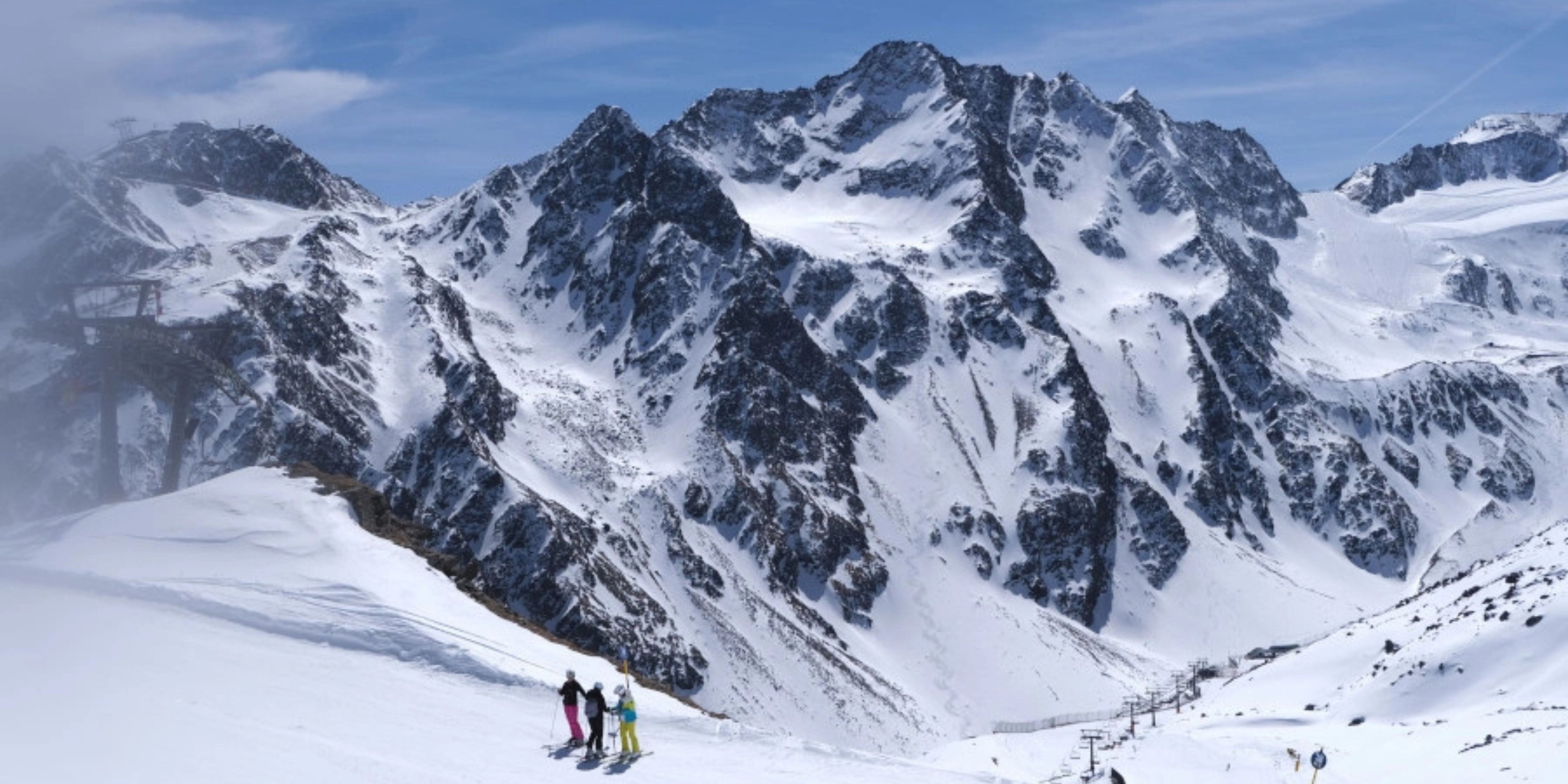
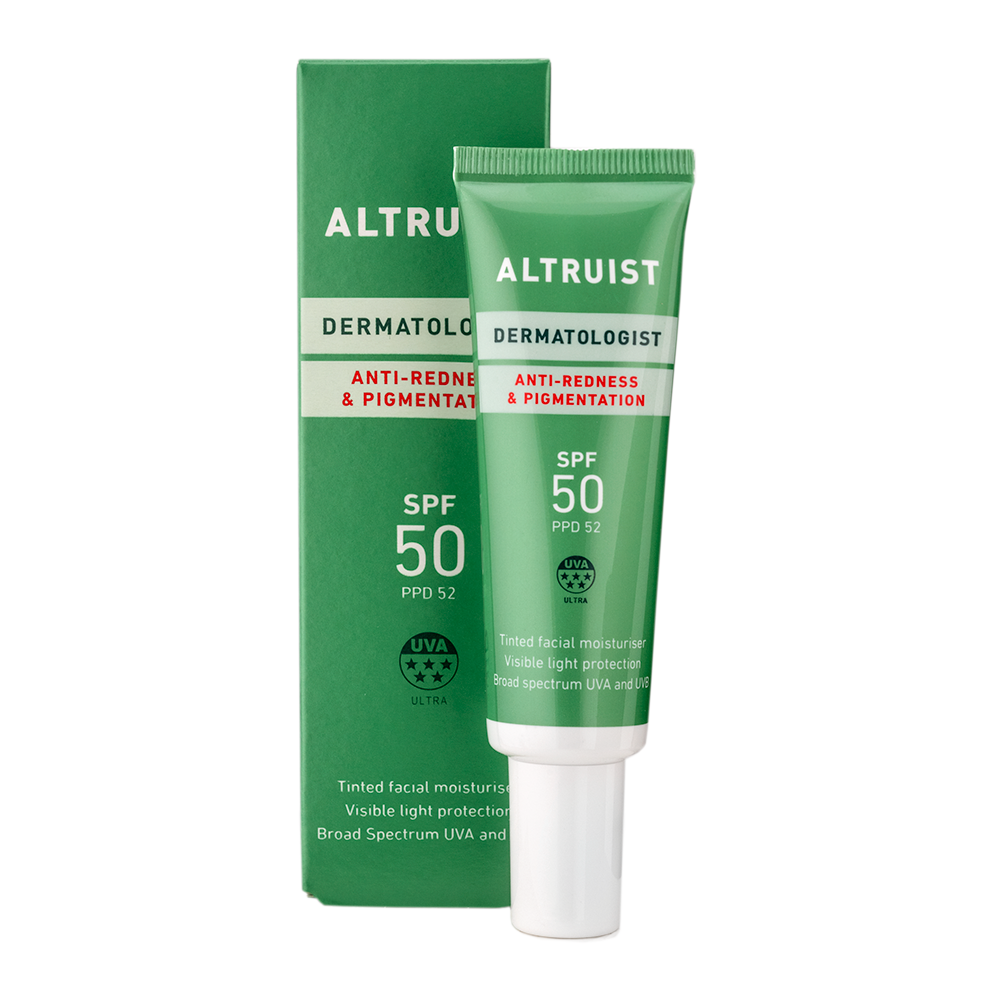

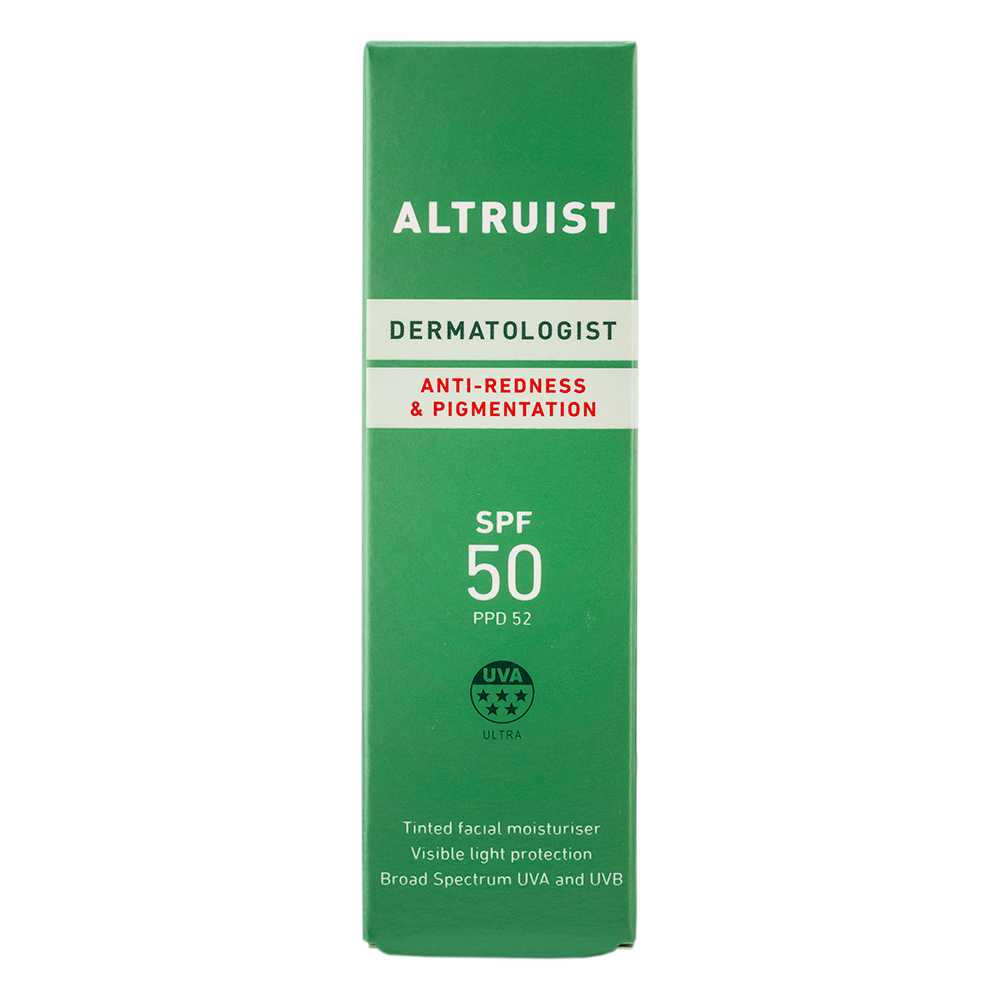

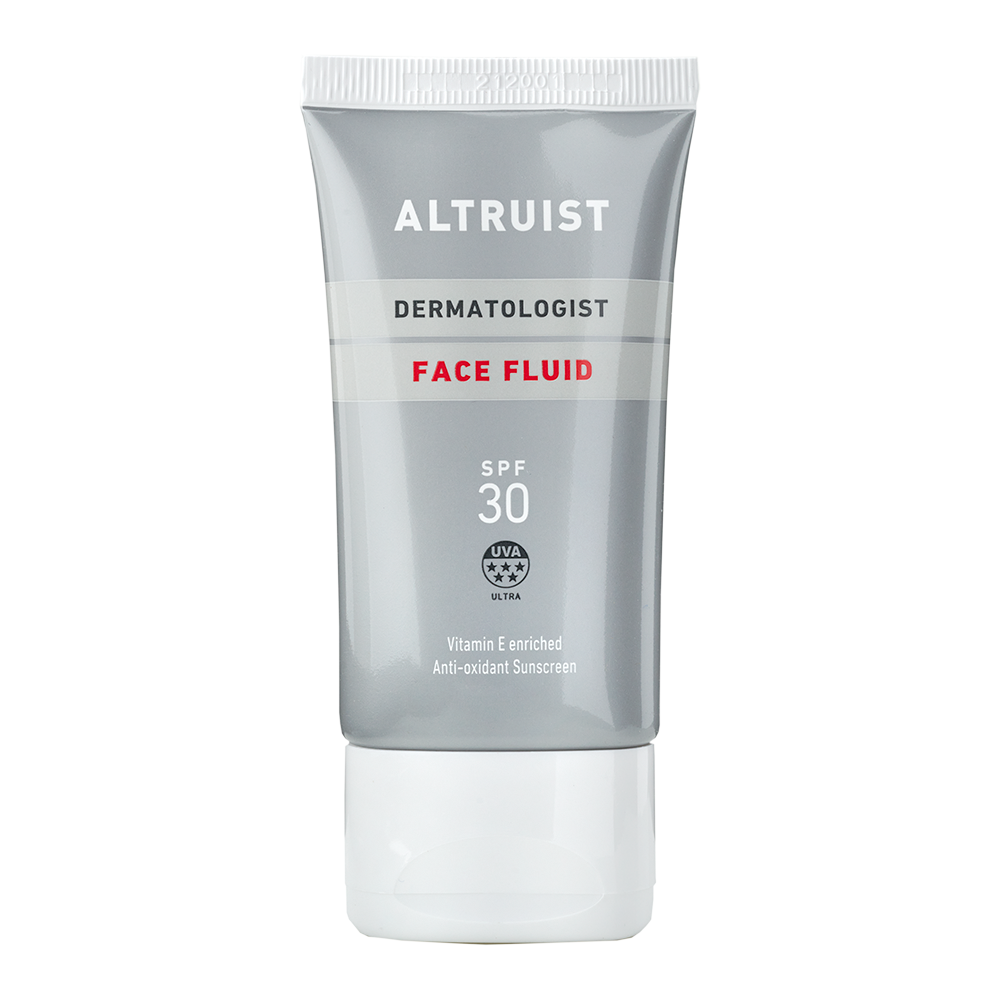
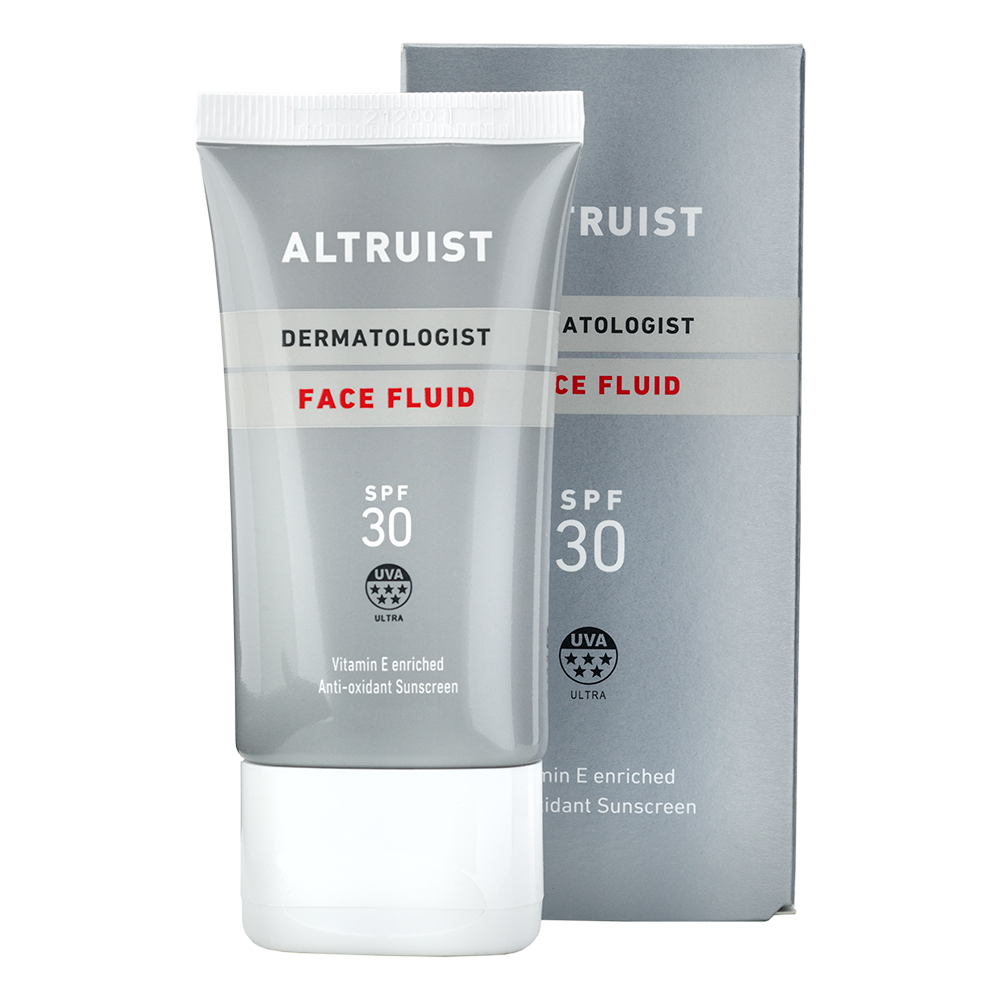

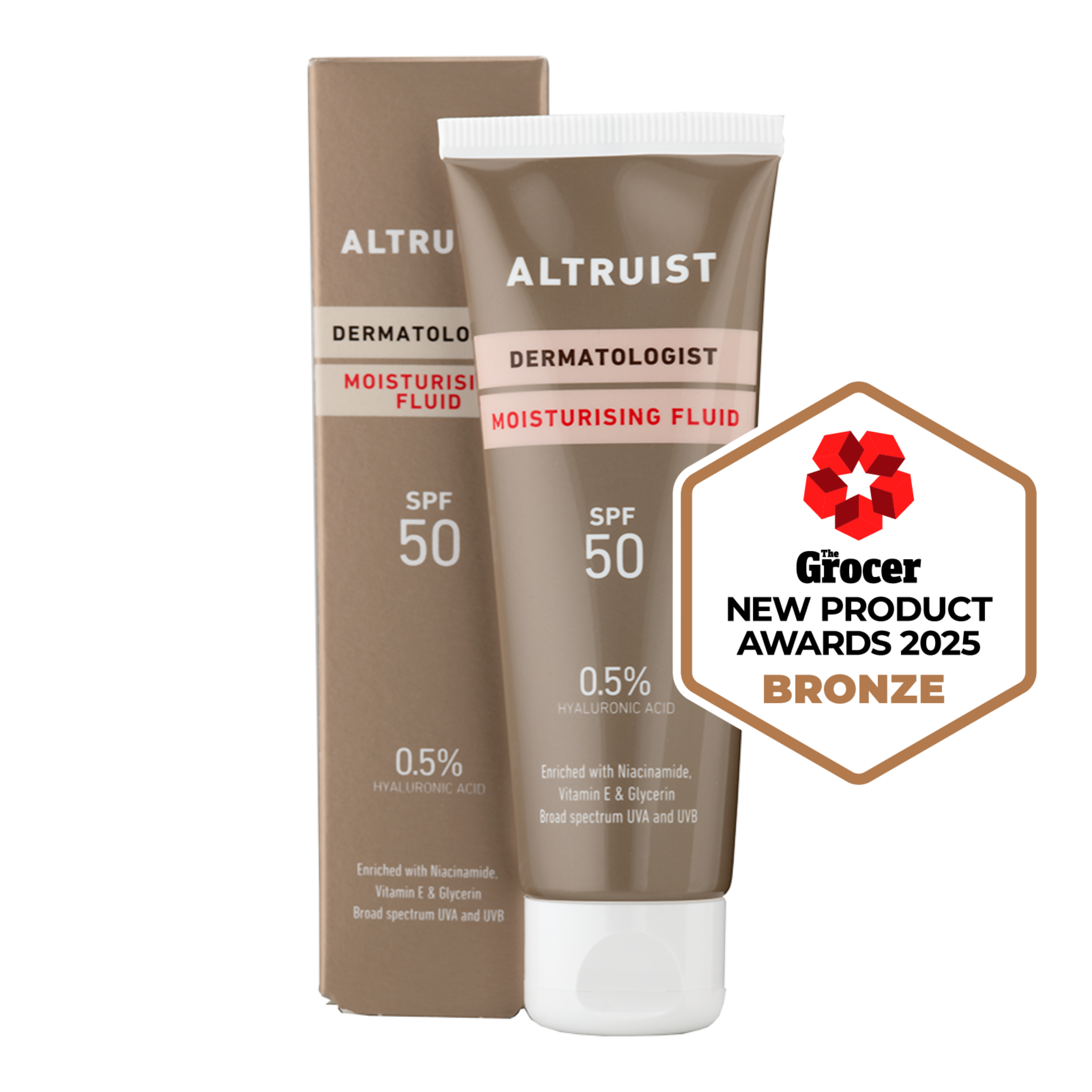
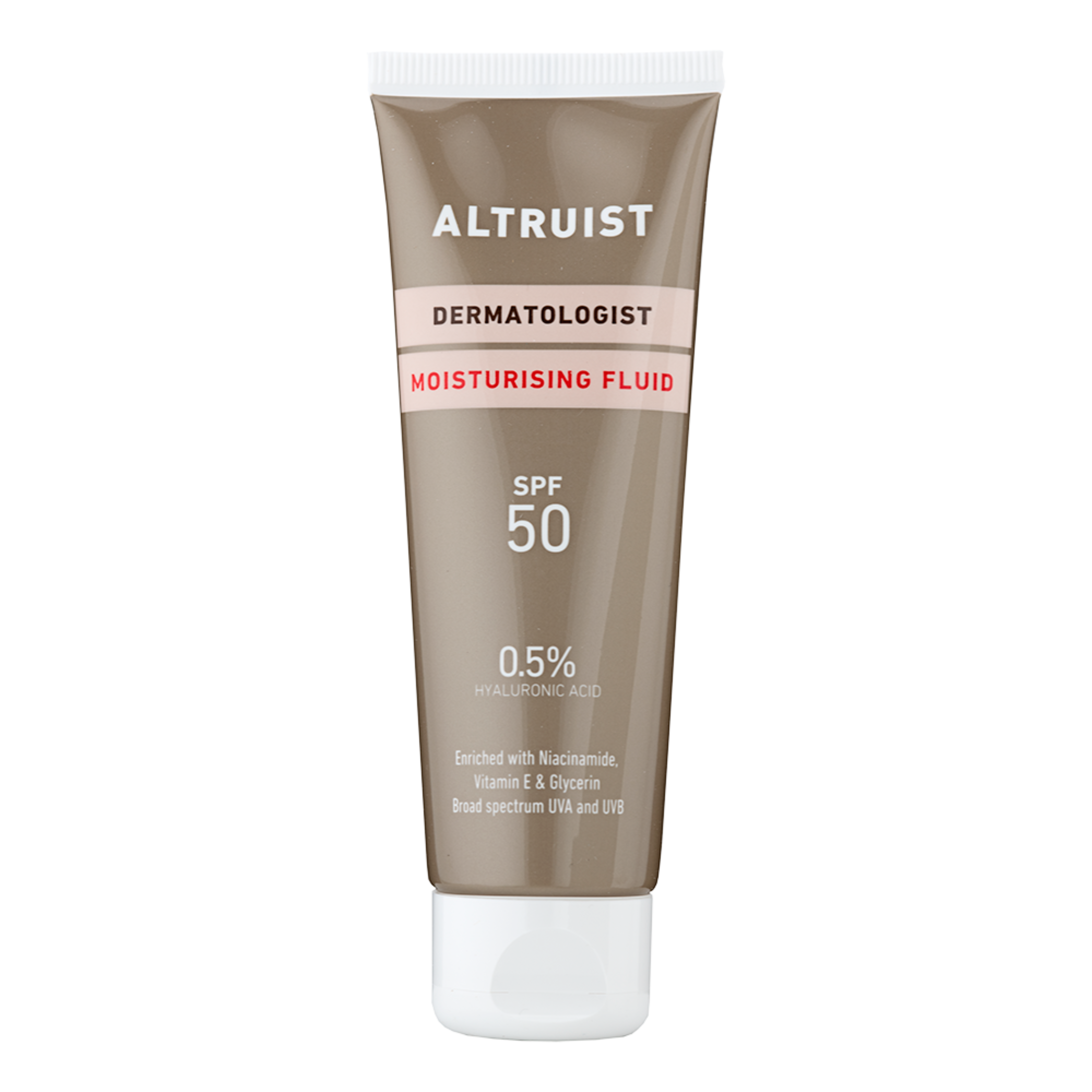
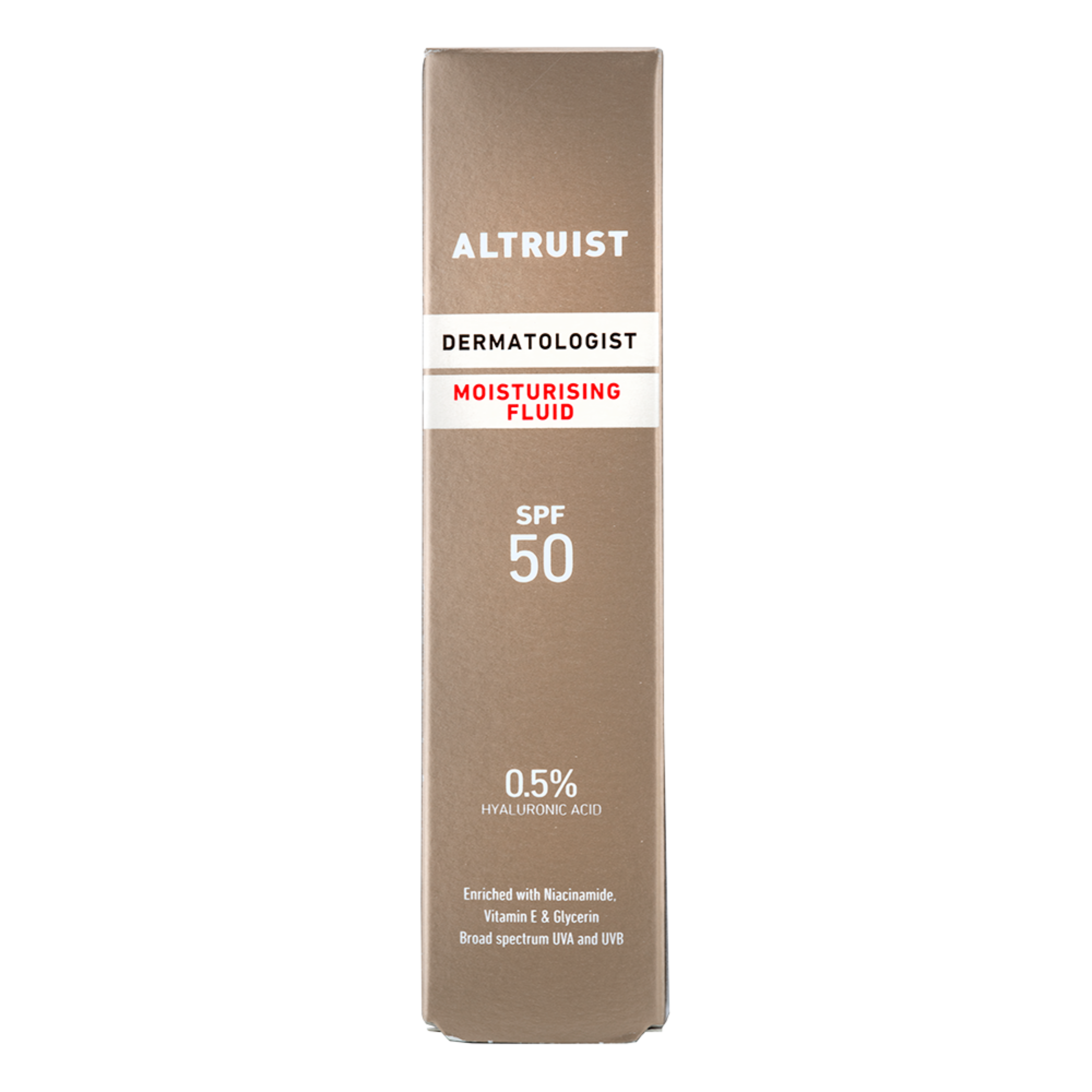
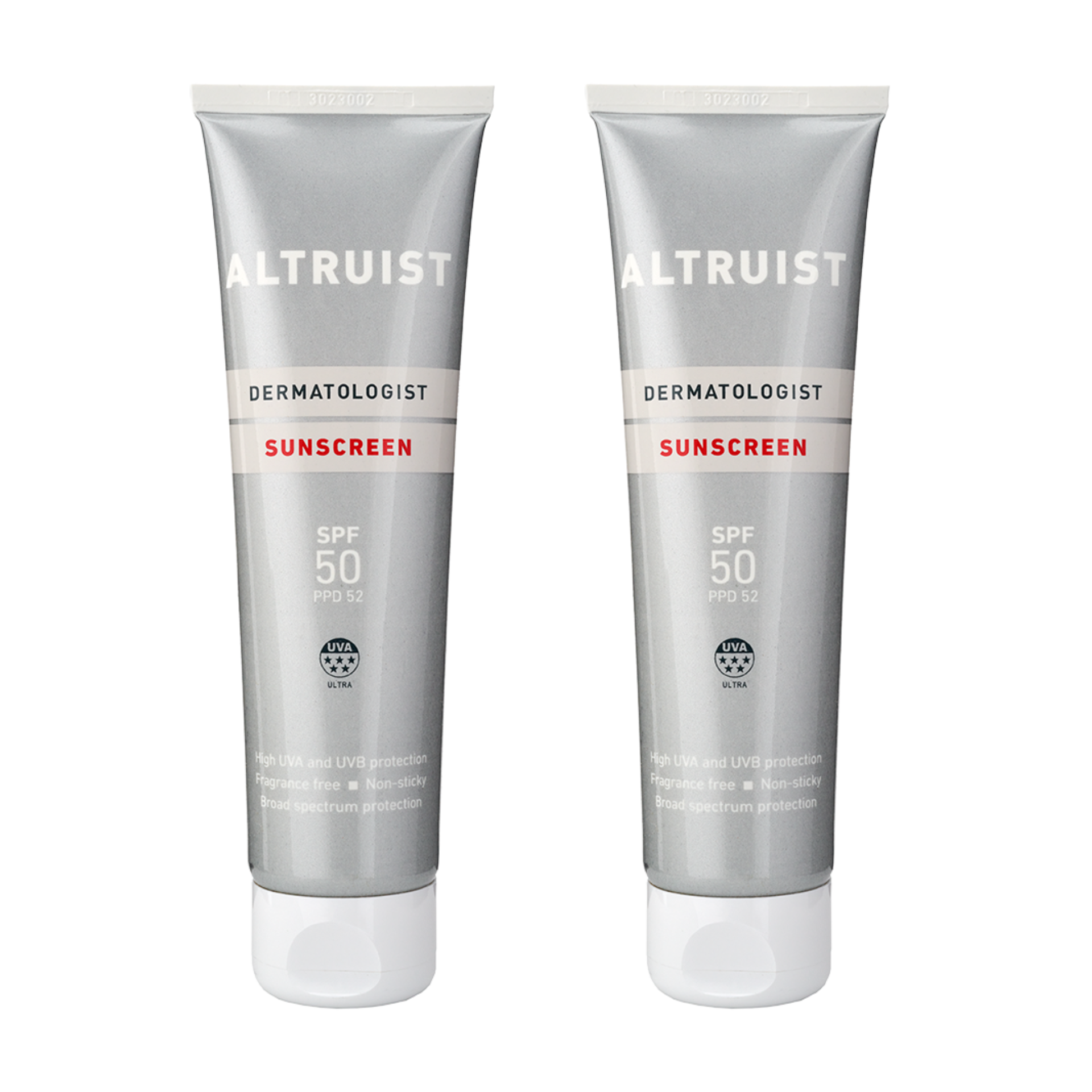
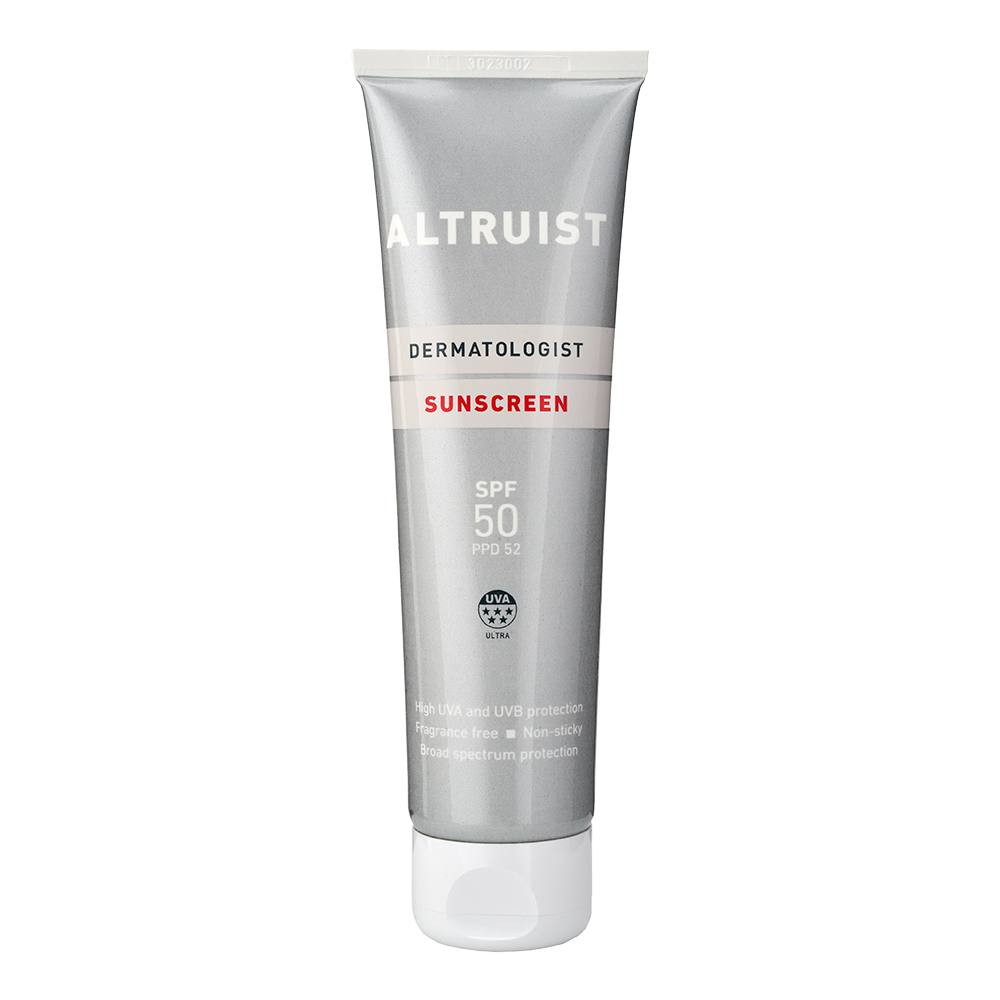
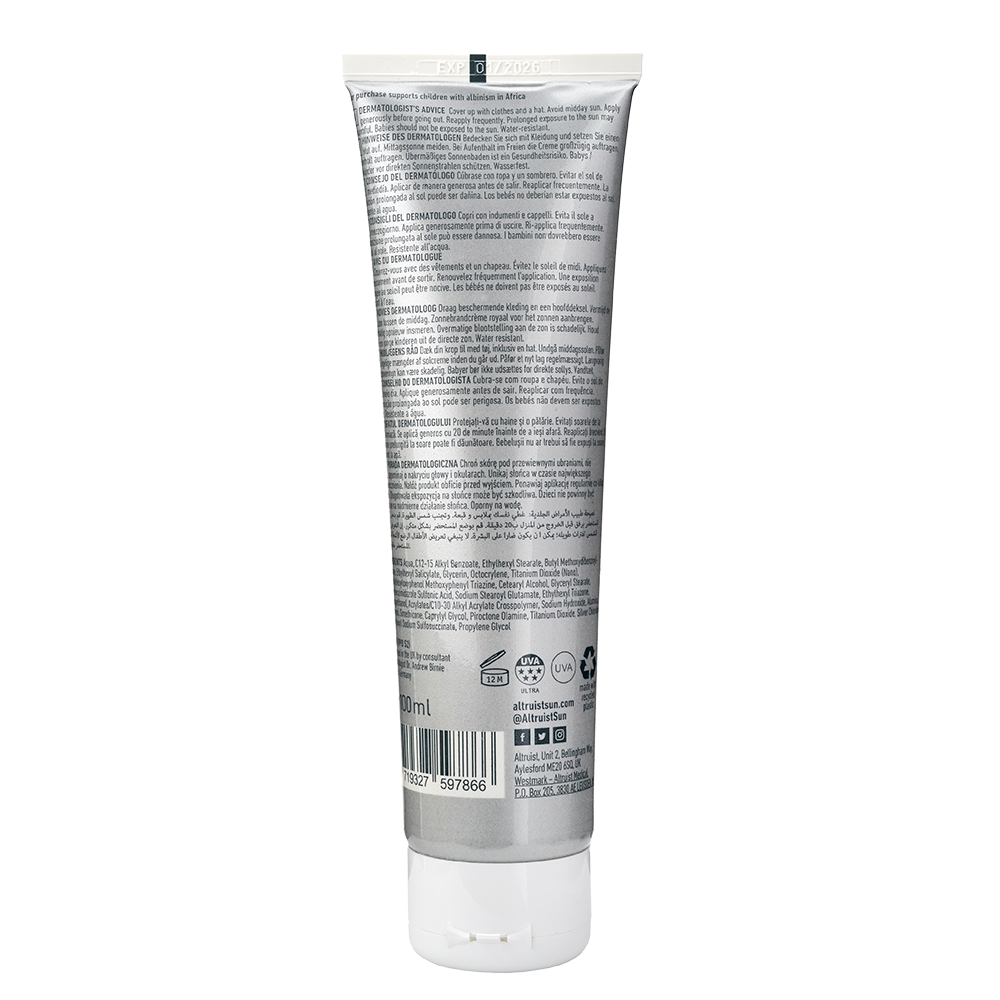
See Sunscreen in Action: How UV Protection Really Works